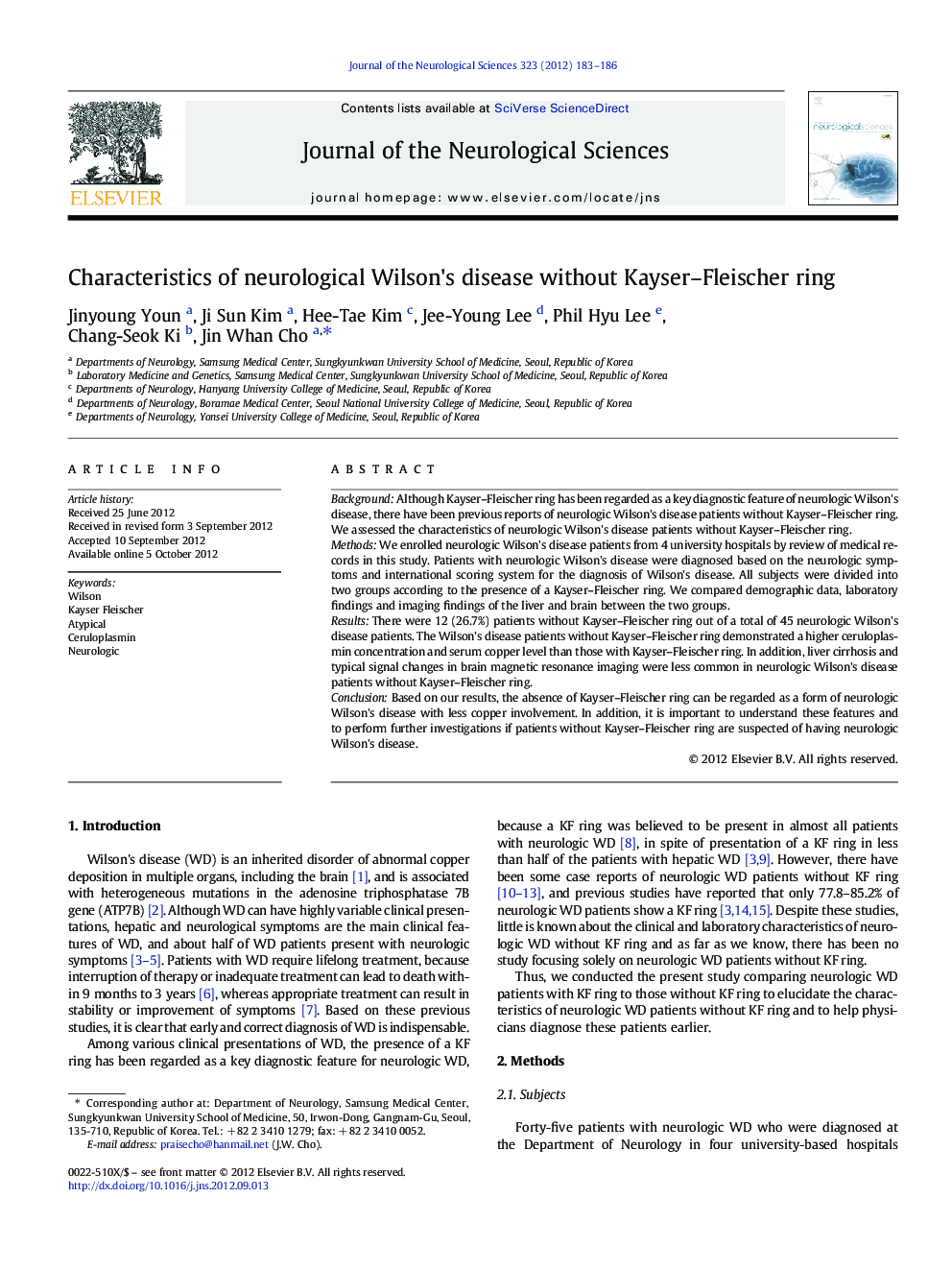| Article ID | Journal | Published Year | Pages | File Type |
|---|---|---|---|---|
| 1913819 | Journal of the Neurological Sciences | 2012 | 4 Pages |
BackgroundAlthough Kayser–Fleischer ring has been regarded as a key diagnostic feature of neurologic Wilson's disease, there have been previous reports of neurologic Wilson's disease patients without Kayser–Fleischer ring. We assessed the characteristics of neurologic Wilson's disease patients without Kayser–Fleischer ring.MethodsWe enrolled neurologic Wilson's disease patients from 4 university hospitals by review of medical records in this study. Patients with neurologic Wilson's disease were diagnosed based on the neurologic symptoms and international scoring system for the diagnosis of Wilson's disease. All subjects were divided into two groups according to the presence of a Kayser–Fleischer ring. We compared demographic data, laboratory findings and imaging findings of the liver and brain between the two groups.ResultsThere were 12 (26.7%) patients without Kayser–Fleischer ring out of a total of 45 neurologic Wilson's disease patients. The Wilson's disease patients without Kayser–Fleischer ring demonstrated a higher ceruloplasmin concentration and serum copper level than those with Kayser–Fleischer ring. In addition, liver cirrhosis and typical signal changes in brain magnetic resonance imaging were less common in neurologic Wilson's disease patients without Kayser–Fleischer ring.ConclusionBased on our results, the absence of Kayser–Fleischer ring can be regarded as a form of neurologic Wilson's disease with less copper involvement. In addition, it is important to understand these features and to perform further investigations if patients without Kayser–Fleischer ring are suspected of having neurologic Wilson's disease.
